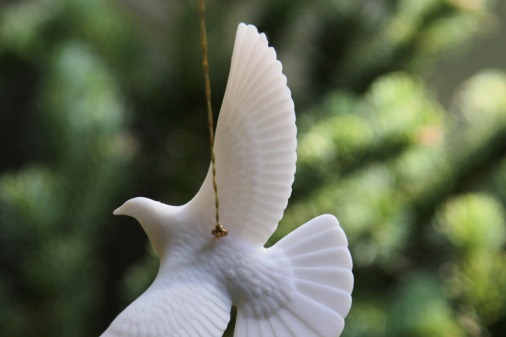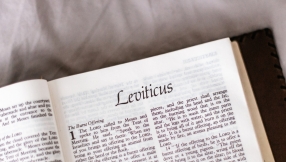
There is a well-known Christmas song called the Twelve Days of Christmas. Some people think it is steeped in biblical allegories. This is the story ...
History
The earliest known version of the folk song was published in England as part of a children's book called Mirth Without Mischief in London in 1780. It is probably much older. Its origins are unknown, but there are theories. Some people think it may be a translation or an adaption of a French song, whilst others think it originates from northern England. We don't really know.
Summary
In the traditional version, the lady of the carol would eventually receive twelve leaping lords, twenty-two dancing ladies, thirty pipers, thirty-six drummers, forty milk maids, forty-two swimming swans, forty-two laying geese, forty gold rings, thirty-six blackbirds, thirty French hens, twenty-two turtle doves and twelve partridges in pear trees. In all, three hundred and sixty four gifts — one for each day of the year except one, perhaps that one was saved for the gift of true love.
The 12 days of Christmas
The phrase "12 days of Christmas", refers to the twelve days which start with Christmas Day on 25th December, and end on the evening before Epiphany on 5th January, which is called the Twelfth Night. This marks the end of Christmas period. This is when traditionally many people take down their decorations. Epiphany is the day in the Church calendar when churches recall the visit of the wise men (Matthew 2:1-12).
Biblical references
One idea about the origin of the song has grown in popularity over the last few decades. It is the suggestion that the lyrics may refer to elements of the Christian faith and the Bible. It is notable that in the song the first seven days refer to birds that are eaten, and the last five days to entertainment provided by people. Some of the words chosen are clearly for alliteration, and we should not read too much into them. However, the theory that the numbers may be allegories or direct references to biblical themes, is worth exploring. Some of the items certainly do suggest biblical themes. So, here are some possibilities...
First day of Christmas
The first day of Christmas is Christmas Day, and refers to the birth of Jesus. According to the song, on the first day of Christmas a true love gave a partridge in a pear tree. The true love perhaps symbolises God.
The partridge
It is the red-legged partridge which perches in trees. This bird was introduced to the UK from France in the late seventeenth century, which makes some people suggest that the song was originally French. Partridges are also mentioned in the Bible in Isaiah 26:20 and Jeremiah 17:11, but the words partridge and pear are probably for alliteration. The symbolism of the partridge would represent Jesus.
The pear tree
Some old variants of the song had juniper tree instead of a pear tree, which is a fir tree sometimes used as a Christmas tree. Trees are deeply symbolic in the Bible. The tree reminds us of Jesus's family tree, the tree of knowledge in Genesis, the cross, and the tree of life in Revelation.
2 turtle doves
The second day has two turtle doves. The phrase "two turtle doves" is very biblical. In Leviticus 5:7 two turtle doves were an alternative to sacrificing a lamb, which was allowed for the poor. They are part of the Christmas story, because there is a reference to two turtledoves in Luke 2:24, which are offered, as a sacrifice by Joseph and Mary, at Mary's purification 40 days after the birth of Jesus. Interestingly this shows that Mary and Joseph were poor at this time, so it was before the wise men had brought them gold.
3 French hens
The third day has three French hens. This reminds us that Peter denied Jesus for a third time before the cock crowed (Matthew 26:75). Alternatively three could refer to the Trinity, or the three virtues of faith, hope and love in 1 Corinthians 13:13.
4 calling birds
The four calling birds seems to be a strong analogy to the 4 Evangelists: Matthew, Mark, Luke and John, calling out the good news in their writings. However, in the original version of the song the birds are called "colly birds", which is an archaic term for blackbirds, from coaly meaning black. Traditionally Bibles had black covers, so perhaps it still works.
5 gold rings
According to the song, the fifth day of Christmas has five gold rings. The gold rings remind us of the 4 gold rings mentioned in Exodus 25:26, which were attached to the ark of the covenant, which helped it to be carried by poles. However, following the mention of a partridge, turtle doves, French hens, colly birds, and then geese and swans, it seems likely that the gold rings should also be birds. It is most likely a reference to golden-coloured ring-necked pheasants. The 5 may refer to the five books of the Law of Moses, also called the Pentateuch or the Torah. These five books are Genesis, Exodus, Leviticus, Numbers and Deuteronomy.
6 geese a-laying
The 6 geese a-laying may refer to the six days it took God to create the world, and lay the creation, as outlined in the first chapter of Genesis. Goose was the traditional meal to eat at Christmas before the turkey was, so maybe a reference to Christmas dinner.
7 swans a-swimming
The seventh day of Christmas has seven swans a-swimming. In the Bible the seventh day is called the sabbath. Compared to geese a-laying, swans swim very gracefully and look like they are resting on the water. Alternatively it may refer to the seven virtues of the Holy Spirit, listed in Isaiah 11:2-3 being wisdom, understanding, counsel, fortitude, knowledge, piety and fear of the LORD. If the song is Catholic in origin then it may be an alliterative reference to the seven Sacraments
8 maids a-milking
The 8 maids a-milking reminds us of the story of Esther. In Esther 2:9, we read that Esther was given seven maids to look after her, and so with Esther herself, that makes eight maids. Alternatively, it may refer to the eight Beatitudes in Matthew 5:3-10. These all started with the word "Blessed", and the word "maids" reminds us that Mary was blessed among women (Luke 1:42).
9 ladies dancing
The 9 ladies dancing remind us of the ladies who were dancing to meet King Saul and David after their victory over the Philistines (1 Samuel 18:6). Nine may also refer to the nine fruit of the Holy Spirit: love, joy, peace, patience, kindness, goodness, faithfulness, gentleness and self-control, as listed in Galatians 5:22-23.
10 lords a-leaping
The 10 lords a-leaping may refer to the ten commandments which leapt from the Lord on Mount Sinai (Exodus 20:1-17).
11 pipers piping
The 11 pipers piping may refer to the 11 faithful apostles who remained still piping the Gospel at Pentecost, after Judas killed himself (Matthew 27:3-10). They are referred to as the Eleven (Acts 1:26 and Acts 2:14). Pipers are also mentioned in Revelation (Rev 18:22 KJV).
12 drummers drumming
At the end of the song are 12 drummers drumming. The number 12 is significant in the Bible for the 12 tribes of Israel, the 12 spies sent into the Promised Land (Numbers 13), the 12 minor prophets, and the 12 apostles. Or, it may refer to the 12 points of the Apostles' Creed which were drummed into people by repetition every Sunday.
Conclusion
So the song "The 12 Days of Christmas" could help to remind us of Jesus who came at Christmas, who died on a tree as a sacrifice, whose parents sacrificed two turtle doves at the Temple for him, and who was denied three times by Peter as the cock crew. It also reminds us of the four Gospels, the five books of Moses, the six days of creation, the seventh day of rest, the eight Beatitudes, the nine fruits of the Holy Spirit, the 10 commandments, the 11 faithful apostles and the 12 tribes of Israel.
Or, perhaps we are reading too much into it, and it is just a silly folk song? What do you think?









